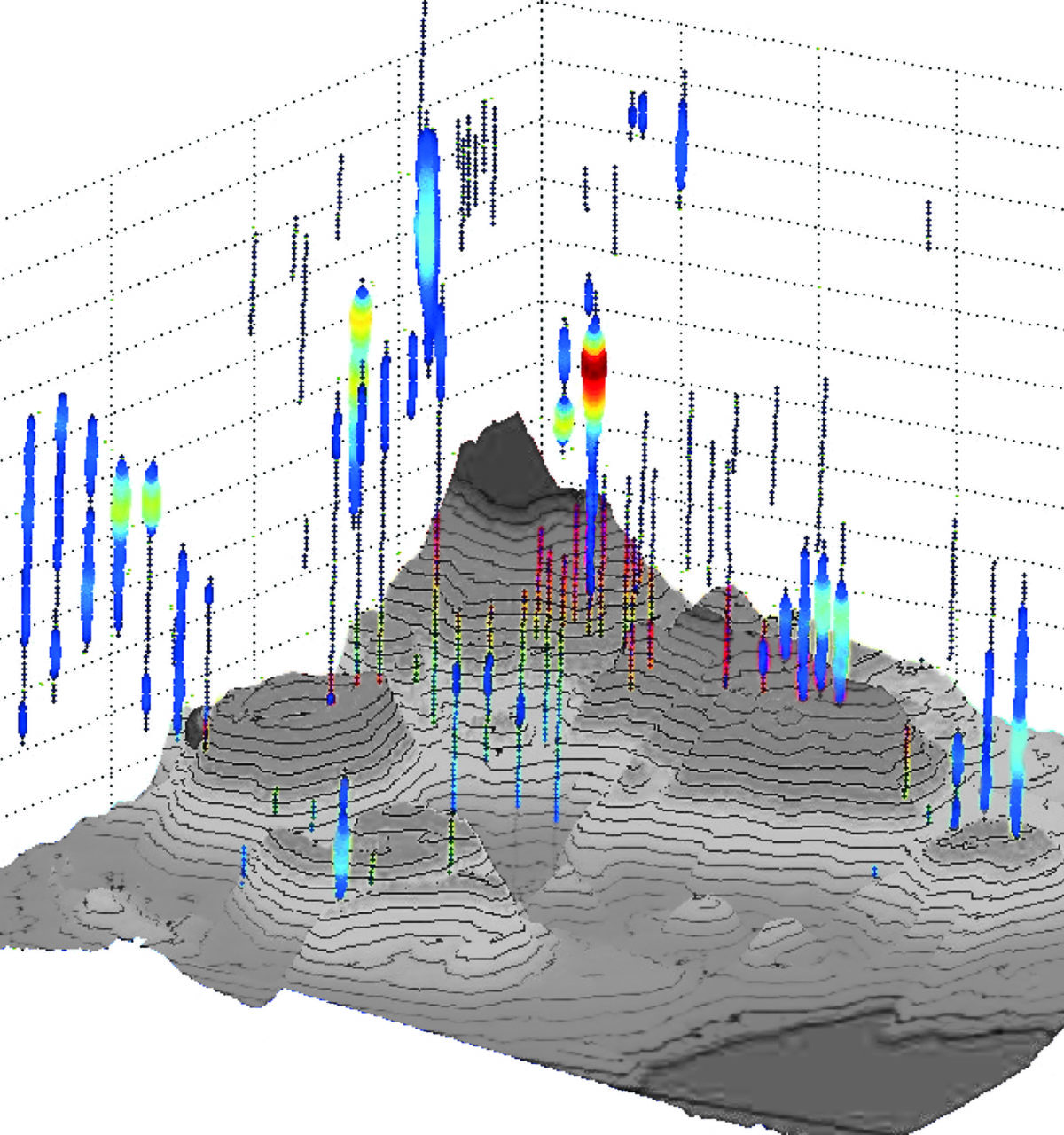Visualization showing plume profiles representing CTD data
For oceanographers, the thermometer and smoke detector hanging down is called a CTD , which measures conductivity (salinity) and temperature at various depths. This tried-and-true instrument is scientists’ first tool to look for hydrothermal plumes. The CTD is lowered all the way to the bottom and pulled up again while it is also towed by the ship, which researchers call a “tow-yo.” CTD sensors detect slightly warmer temperatures, mineral particles, and certain chemicals— all telltale signs that the CTD has passed through a plume. “It’s hit or miss,” said University of Texas marine geochemist Hedy Edmonds, who headed CTD operations on the expedition. Still, with a little luck and a lot of experience, over many CTD casts, scientists constructed a map (shown here) of water over the seafloor, showing areas (yellow and red) with suspected plume fluids. (Courtesy of Hanumant Singh, © Woods Hole Oceanographic Institution)
Image and Visual Licensing
WHOI copyright digital assets (stills and video) contained on this website can be licensed for non-commercial use upon request and approval. Please contact WHOI Digital Assets at images@whoi.edu or (508) 289-2647.

